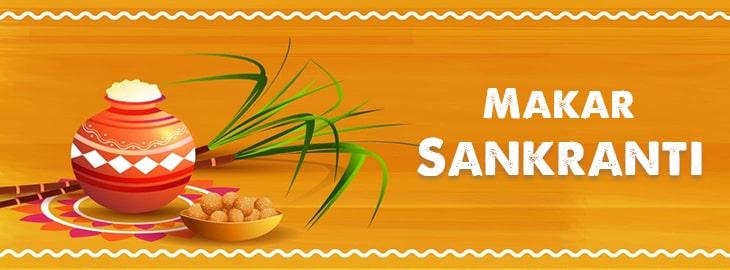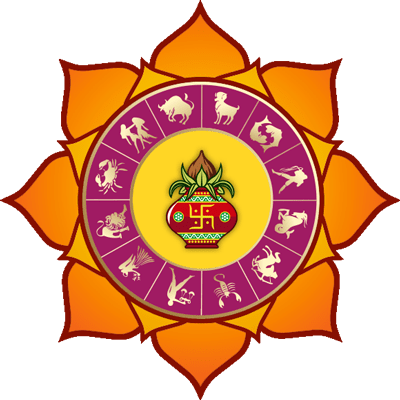
Makar Sankranti
Get Makar Sankranti 2024 date along with Makarsankranti Muhurat of Punya Kaal and Mahapunya Kaal for New Delhi, India. Its called Pongal, Maghi and Sankranthi too.
Makar Sankranti 2024
When is Makar Sankranti in 2024?
Sun
14th
Jan
Makar Sankranti Puja Muhurat For New Delhi, India
Punya Kaal Muhurat : 07:15:13 to 12:30:00
Duration : 5 Hour 14 Minute
Mahapunya Kaal Muhurat : 07:15:13 to 09:15:13
Duration : 2 Hour 0 Minute
Sankranti Moment : 02:31:04
Makar Sankranti is celebrated on the 14th of January every year. Unlike most Hindu festivals which are laid down as per the changing positions of the Moon and are based on the Lunar Calendar, Makar Sankranti is based on the Solar Calendar. Every year, Makar Sankranti is celebrated to mark the moving of the Sun in the Capricorn or Makar sign. The word ‘Sankranti’ literally means ‘movement’. Hence, the festival accurately denotes the movement of the Sun into Makar zodiac.
On the day of Makar Sankranti festival, the period of the day and that of the night is equal making it one of the Ancient festivals. The event officially marks the onset of spring or Indian summer. Post this day, the Sun stays in for a little longer as compare to the previous days making days bigger than nights.
SIGNIFICANCE
Religious and Cultural perspective
The festival of Makar Sankranti has highly religious and cultural concernment. In consonance with the Puranas, it is believed that Lord Surya pays visit to his son, Lord Shani who is the lord of Makar sign, on this day. This celebration signifies a healthy bond that is shared between a father and a son.
Also, as per popular beliefs, Makar Sankranti is celebrated to be aware of the triumph of Lord Vishnu over Asuras. This legend goes on to tell how Lord Vishnu ended the disaster caused by Asuras on Prithvi Lok by cutting their heads off and burying them under the Mandara Parvat. Hence, signifying the victory of right judgment over atheism.
The harvest festival
Makar Sankranti is celebrated to admit the fresh harvest of the season and all those who worked hard for a fruitful harvest. ‘Mattu Pongal’ is renowned on the following day of Makar Sankranti to admit the hard work and labor that the farm animals have put in for a successful harvest. Farm animals are of utmost importance for a healthy and bountiful produce. Hence, it is of huge importance to respect and celebrate their efforts and back breaking work. In far extensive villages, animals are also think to be a part of the meeting when the next harvest and crop sowing is planned. This festival is a celebration of the bond that we share with other species and the reciprocally co-operative environment that we live in.
The Cosmic Connect
Makar Sankranti has a delightful nuance to it as well. This period of time is considered to be of ultimate importance for sages and yogis for fresh inception in their spiritual odyssey. In general, people consider making fresh starts and letting go of any horrid memories and associations of the past. Many facet of a Yogi’s life are based on the divine bond between the human system and the universe. A Yogi’s life evolves keeping into regard, all the movements in the universe and in a human’s life; ranging from movement of the planets to the life cycle of a human being.
Festivities akin to Makar Sankranti
In India, harvest season is celebrated with utmost zeal and joy considering that a large crumb of Indian populace is that of farmers and cultivators. Hence, festivals that are celebrated in other parts of the country sharing the same ancestry are as follows:
Thai Pongal / Pongal
Thai Pongal, celebrated in Tamil Nadu, is a festivity of four days to pay homage to Lord Indra. This festival is a passable to thank Lord Indra for bountiful rain and hence the fertile land and a good fruitful. Thai Pongal celebrations are unfinished without the offerings made to Lord Surya and Lord Indra. On the second day of Thai Pongal, freshly cooked rice boiled in milk and served in earthen pots is offered to Lord Surya. On the third day, Mattu Pongal is celebrated to honor ‘Basava’- Lord Shiva’s bull by formalize cattle with bells, flower garlands, beads and paints. On the fourth day of Pongal, Kannum Pongal is celebrated in which all the women of the families come together to perform various rituals.
Uttarayan
Uttarayan is specially celebrated in Gujarat to celebrate the harvest season. Vasi Uttarayan is celebrated on the following day after Uttarayan. This festival is marked by flying kites and feasting on jaggery and peanut chikkis. Undhiyu -made of special spices and roasted vegetables- is a special dish made on the occasion of Uttarayan.
Lohri
Lohri is the harvest festival of Punjab, celebrated on the 13th of January. This festival is known for sacred fire that are lit in the evening and overindulgence on (Moongphali) Peanuts, (Til) Sesame, (Gajak, Gur) Jaggery and Popcorn. As a part of the worship ritual, these food items are also offered to the sacred fire before eating them.
Magh/ Bhogali Bihu
Magh or Bhogali Bihu is a one week long harvest festival of Assam. It begins on the 29th day of the month Pooh, which falls on the 13th of January and lasts almost a week. The celebrations of this festival include bonfires and a feast of rice cakes called ‘Shunga Pitha’, ‘Til Pitha’ and coconut sweets called ‘Laru’. People native to the place also indulge in games such as ‘Tekeli Bhonga’ which involves pot breaking and buffalo fighting.
Onam
Onam is a ten daylong celebration to honor the annual visit of Asura Mahabali from patala lok to Prithvi lok to meet his kin. Asura Mahabali is considered one of the most kind and influential kings that humanity has ever seen. Tableaus and processions exhibiting the culture of Kerala are organized on this festival. People native to the state and culture indulge in traditional dance during this period. The most famous activity during Onam is the boat races that put up the most magnificent show in this duration.
Rituals and Customs
It is denoting to feast on ‘Til-Gur’ and enjoy a happy session of kite-flying on Makar Sankranti. ‘Til-Gur’ or sesame and jaggery can be eaten in the form of laddus or chikkis and is believed to keep the body warm, considering the cold weather during this festival. Makar Sankranti is a festival of shedding the spast lead of unpleasant relations and sour memories and moving on with a positive attitude towards others. As per popular beliefs, people consume sweets on Makar Sankranti to induce sweetness in their speech and attitude which helps them tone down the hostility and praise the love and happiness around them. Sweets are also distributed on this festival to celebrate the visit of Lord Surya to meet his son, Lord Shani, keeping aside his anger.
Similarly, kite-flying on the occasion of Makar Sankranti has a significance of its own. In the earlier days, kite flying was usually done in the early hours of the morning just after the sunrise when the sun rays aren’t unbearable. Since the weather is usually quite cold during Makar Sankranti, it was believed that basking a little in the sun while indulging in a joyful session of kite-flying would be a good way to stay warm and away from infections and harmful bacteria’s. Rollicking in the sun on a warm morning with kites filling the sky with colours seems like quite a good way to celebrate happiness, joy and ardor.
Pilgrimages
Usually, Makar Sankranti marks the onset of the famous Kumbh Mela in Northern India, particularly in Uttar Pradesh and the end of the Sabarimala pilgrimage in Southern India, particularly in Kerala. On this occasion, generally, people belonging to many different castes and cultures prefer taking a dip in holy water to mark the auspiciousness of this festival. It is also believed that those who die on this auspicious day gain Moksha and get freedom from the cycle of death and rebirth.



